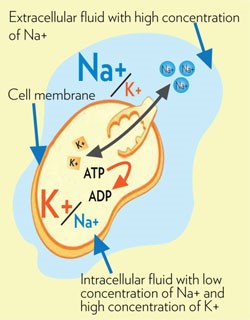Cold Laser therapy
The purpose of cold laser therapies (sometimes called Low Level Lasers) is to provide light energy; referred to as photons, to damaged cells.
The photons are absorbed by the cells to stimulate accelerated healing, reduced pain, and reduced inflammation.
GENERAL EFFECTS OF COLD LASER

Anti-Inflammatory Actions: When tissue injury occurs, the inflammatory process is initiated to immobilize the area to prevent further damage, providing us with an indication that the body is hurt. This process is usually associated with pain caused by inflammation pressuring nerve endings. In order to reabsorb this interstitial fluid and decrease inflammation in the region, the body produces nitric oxide (NO), which has been proven to relax the lymphatic system causing it to become more porous allowing the reabsorption process to occur. This process not only reduces inflammation but causes temporary vasodilation (increased diameter of capillaries) bringing much needed oxygen, fuel molecules and other metabolites to the injured tissue aiding in their natural healing.
Pain Relief: Pain Relief is due not only to accelerated healing processes, but is also the result of increased release of endorphins.

Faster Wound Healing: Cells that lack energy are unable to participate in the healing process. Light energy is delivered to injured cells which in turn absorbs the light and converts it into food energy and uses it to replenish themselves. Once cells are fully recharged they are able to replicate and divide, and build upon one another to heal the injured area. Theralase stimulates the mitochondria of the cell to produce more ATP (energy) thus repairing damaged tissue through the phosphorylation of glucose to ATP via the Krebs cycle and Electron Transport Chain. Photons with wavelengths between 630nm – 670nm increase the speed at which the mitochondria can absorb glucose and convert it into ATP. Theralase uses 660 nm visible red laser light, which is at the peak excitation of cytochrome C oxidase (a critical cytochrome in the Electron Transport Chain used in the phosphorylation of glucose into ATP)
Increased Metabolic Activity: Cold Laser stimulates the body to produce increased levels of specific enzymes, immune cells, oxygen, and nutrition for blood cells.
Increased Collagen and Elasticity: Many studies show the increased collagen and elasticity that occur from cellular stimulation using Cold Laser Therapy
Increased Vascular Activity and Tissue Oxygenation: Laser photons induce dilation of local blood vessels that can increase blood flow to effected areas. One way it does this is by increasing Nitric Oxide production
Reduced Scar Tissue Formation: Lasers have been shown to reduce the formation of scar tissue following tissue damage from: cuts, scratches, burns or surgery.
Stimulated Nerve Function:  Pain results when a stimulus causes action potentials to rapidly propagate along a nerve cell. These actions potentials are primarily due to an expulsion of positively charged sodium ions (Na+) and an influx of potassium (K+) ions into the nerve cell altering the electrical potential across the membrane. The peak absorption of lipids is in the 905 nm to 910 nm range. Laser light is thus directly absorbed by receptors within the bi-lipid cellular membrane of nerve cells. Once absorbed, the laser light will increase the porosity of the cellular membrane allowing for a reabsorption of sodium ions and expulsion of potassium ions across the cellular membrane rebalancing the sodium-potassium pump and removing the pain signal at source.
Pain results when a stimulus causes action potentials to rapidly propagate along a nerve cell. These actions potentials are primarily due to an expulsion of positively charged sodium ions (Na+) and an influx of potassium (K+) ions into the nerve cell altering the electrical potential across the membrane. The peak absorption of lipids is in the 905 nm to 910 nm range. Laser light is thus directly absorbed by receptors within the bi-lipid cellular membrane of nerve cells. Once absorbed, the laser light will increase the porosity of the cellular membrane allowing for a reabsorption of sodium ions and expulsion of potassium ions across the cellular membrane rebalancing the sodium-potassium pump and removing the pain signal at source.
Laser photon exposure also speeds the process of nerve cell reconnection, and helps bring numb or dysfunctional areas (neuropathy) back to life.

